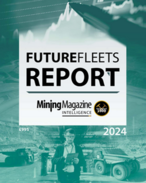The pre-budget survey of 364 businesses in construction, services and manufacturing found 68% of respondents would like to see the 2014-15 federal budget focus on rising government infrastructure spending.
Across the sectors, 29% of construction companies ranked infrastructure spending as their top budget priority while another 60% had it in their top three.
Overall, the combined results ranked a reduction in tax burden first, with 70% of respondents flagging it as a main concern.
Balancing the budget within five years made it to the third position, with 57% of the vote.
These leading preferences were followed by increasing spending on training and apprentices (39%), raising tax incentives for industry research and development (39%) and bringing the budget into balance within two years (28%).
Ai Group CEO Innes Willox said the survey showed the business community thought it critical for government to create the right environment for them to lift investment and productivity while also consolidating the budgetary position.
He said this should be done in a measured way over a number of years, rather than risking damage to the “still-fragile economy” by cutting too fast or too hard or by “saddling” business with counterproductive tax increases.
“Perhaps the biggest challenge for the government is that the budget cannot be one-dimensional,” Willox said.
“The fiscal situation and particularly the longer-term fiscal outlook require far-sighted action to restore the strength of Australia's public finances.
“But the budget must also foster growth.
“Only a larger and more robust economy will generate the recovery in tax revenues needed to complement discipline on the spending side of the budget.”
Willox said now was the right time to reduce tax burden on business as it would likely boost investment as well as help grow and rebalance the economy as Australia faced a sizeable reduction in mining investment plus a risk of a slower growing and more fragile economy.
“The time is also right to lift the pace of infrastructure investment, with the clear need to address the infrastructure backlog matched by capacity becoming available as mining-related construction projects are completed,” he concluded.
The survey was released as premiers and chief ministers signed an asset recycling agreement during Friday’s Council of Australian Governments meeting.
The five-year plan will allow states and territories to unlock funds from mature infrastructure assets to recycle in new infrastructure projects that will support economic growth and enhance productivity.
Under the agreement, the states and territories will have two years to make a list of the assets they would like to sell and identify infrastructure projects they intend to fund with the recycled capital from these sales.
The federal government will contribute an additional 15% of the total state or territory financial contribution towards each project.
It will draw funds from an asset recycling pool and will allocate them on a first come, first served basis.
Business Council of Australia CEO Jennifer Westacott welcomed the agreement.
“Recycling capital is a sensible way for governments to fund new public infrastructure, especially when facing significant budget constraints,” she said.
“There is potentially a huge community dividend in what COAG has agreed to.
“It would allow communities to get faster access to the infrastructure they need – such as roads and rail – to lift their living standards.”
In designing infrastructure projects, she said governments should give priority to applying user-pays models and creating opportunities for private investment to further limit the call on public spending.
























